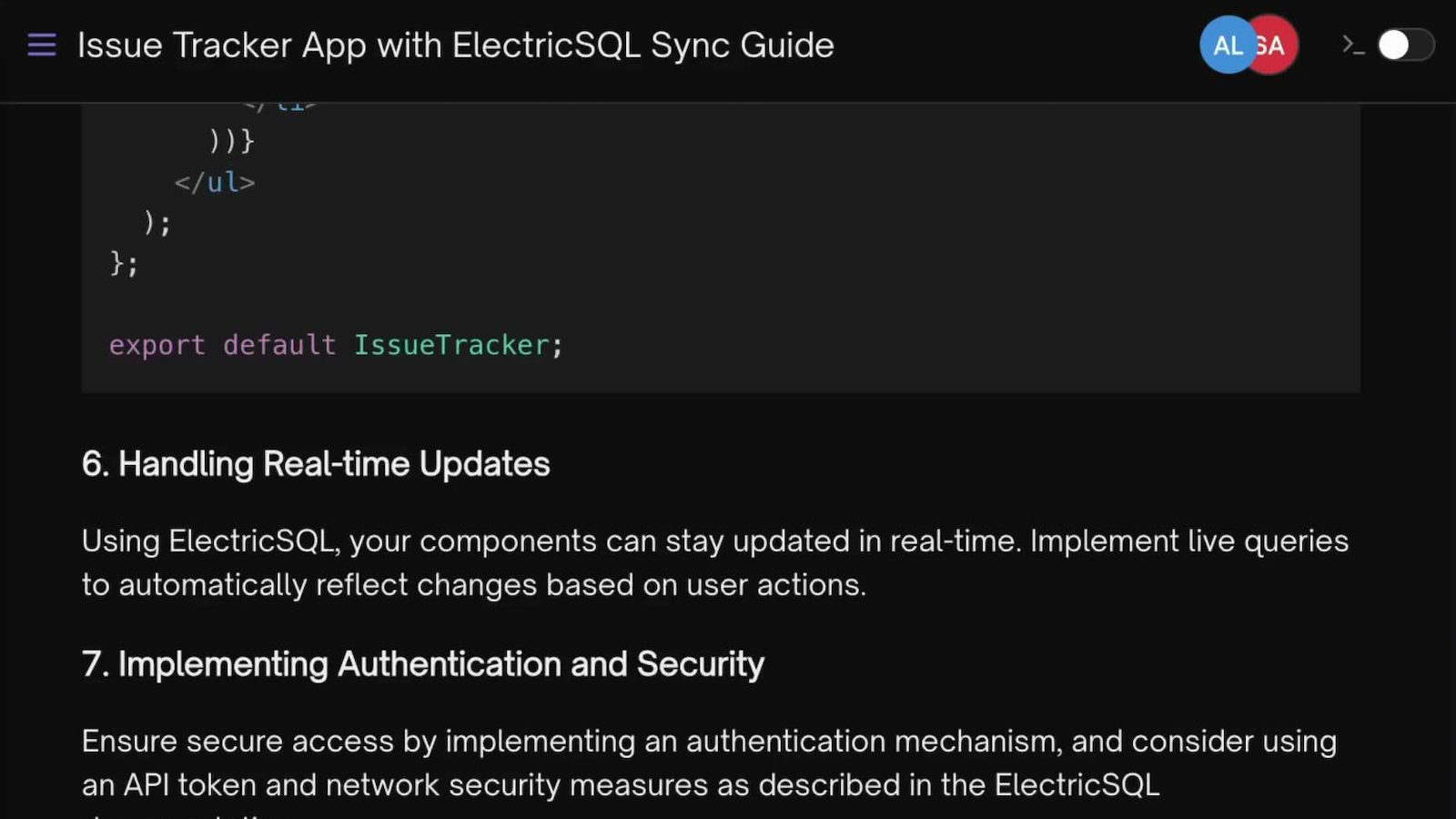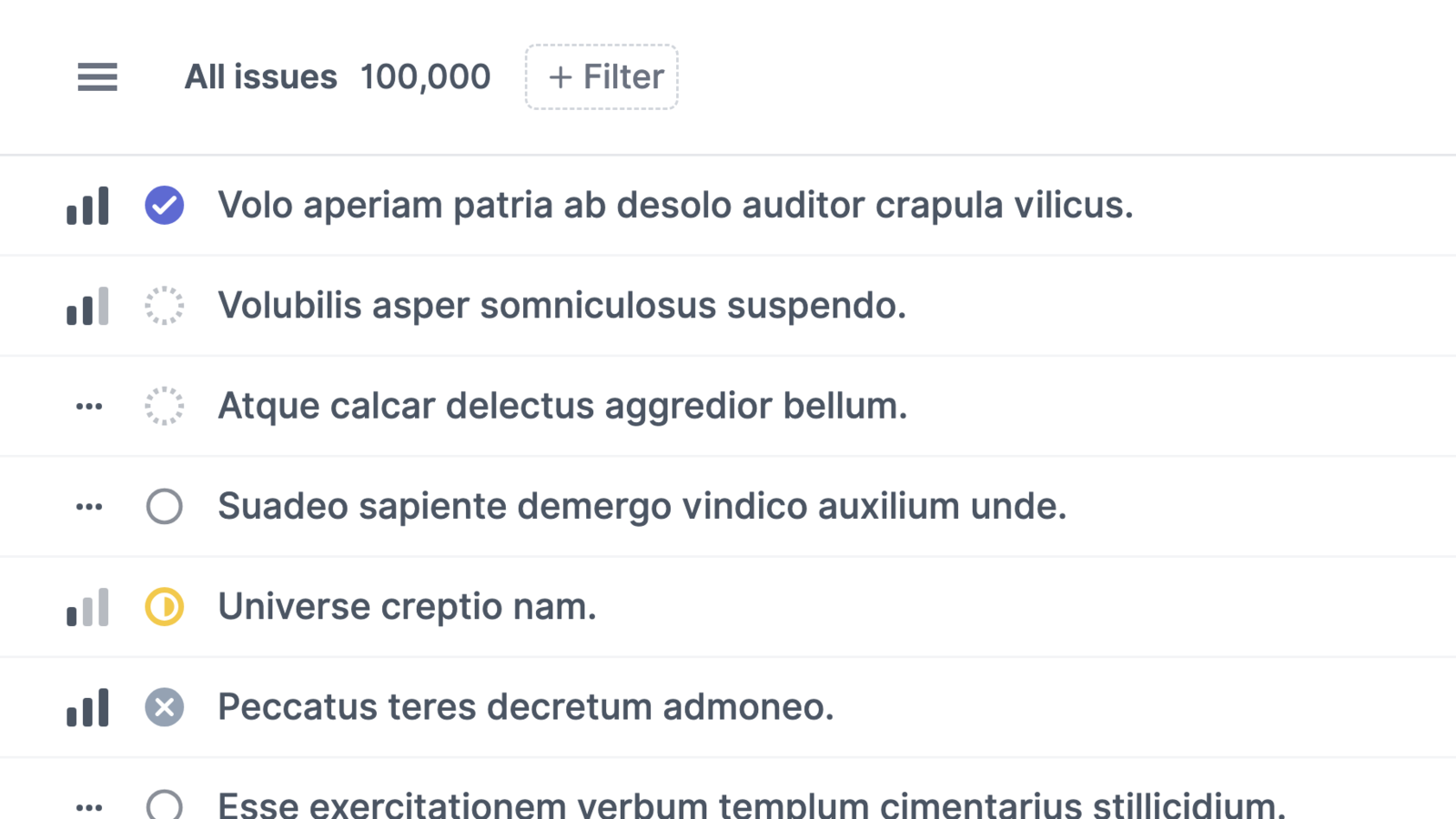Documentation
Welcome to the ElectricSQL developer documentation!
ElectricSQL is a Postgres sync engine. Use it to sync subsets of your Postgres data into local apps, services and environments.
🚀 Latest releases
Electric is now 1.0 and Cloud is now in public BETA!
New to ElectricSQL?
Start with the Quickstart to get up-and-running. The guides on Auth, Shapes and Writes are also good entrypoints and helpful to understand how Electric works.
The HTTP API and TypeScript Client docs show how to sync data. The React page illustrates how to bind these into a reactivity framework.
The easiest way to use Electric in production is the Electric Cloud. Alternatively, the Deployment guide covers how to self host.
Looking for PGlite docs?
If you're interested in using PGlite, it has it's own docs site at pglite.dev/docs
Examples
See the Demos section and examples folder on GitHub for demo apps and examples, e.g.:
The integration docs also illustrate common patterns, e.g. using Electric with frameworks like TanStack and Phoenix and platforms like Supabase and Cloudflare.
Source code
ElectricSQL is an open source project developed at github.com/electric-sql. Check out the source code, issues and development in progress there.
Support
See the Community page for information on support and events, including our community Discord where you can ask questions and get support.



